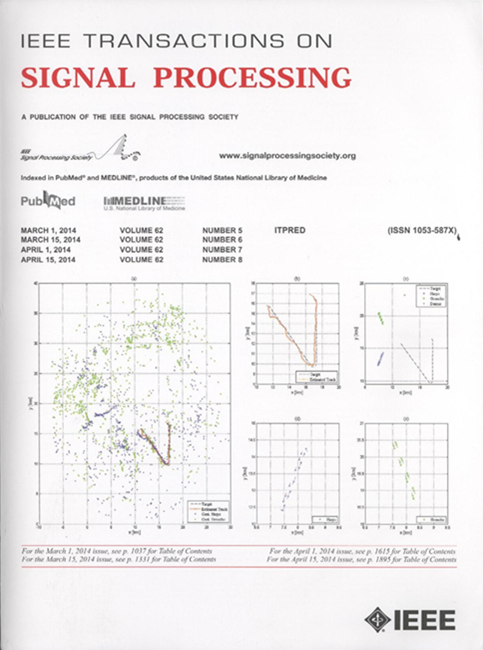Proportionally Fair Joint Power and Channel Allocation for Hybrid NOMA-OMA Downlink Systems
IF 5.8
2区 工程技术
Q1 ENGINEERING, ELECTRICAL & ELECTRONIC
引用次数: 0
Abstract
We consider a downlink multiuser transmission system that divides users into clusters, each cluster shares one channel using non-orthogonal multiple access (NOMA), while different clusters are assigned orthogonal channels. To achieve high system efficiency while guaranteeing fairness, we propose a joint power allocation (PA) and channel allocation (CA) framework with the proportional fairness (PF) objective, which maximizes the sum of logarithmic rates. The problem is decoupled into the PA and CA subproblems, which are solved iteratively. For the PA subproblem, we prove that although it is not convex, strong duality holds and the problem can be solved globally optimally by solving the KKT conditions. We further propose a混合NOMA-OMA下行系统的比例公平联合功率和信道分配
本文研究了一种下行多用户传输系统,该系统将用户分成簇,每个簇使用非正交多址(NOMA)共享一个信道,而不同的簇分配正交信道。为了在保证公平性的同时获得较高的系统效率,我们提出了一种以比例公平性为目标的联合功率分配(PA)和信道分配(CA)框架,该框架使对数速率之和最大化。该问题解耦为PA子问题和CA子问题,迭代求解。对于PA子问题,我们证明了尽管它不是凸的,但强对偶性成立,并且通过解KKT条件可以全局最优解问题。为此,我们进一步提出了$O(T(\log\frac{1}{\epsilon})^{2})$时间算法,其中$T$是用户数量,$\epsilon$是容差阈值。以前只考虑过一个NOMA组的PA问题与PF目标。当专门针对这种情况时,我们的算法比以前的工作快得多。对于CA子问题,我们证明了它等价于一个二部图匹配问题,并且存在有效的求解算法。我们的经验表明,所提出的联合PA-CA方法对少量用户执行非常接近穷举搜索。大量的实验表明,我们的框架在系统效率和公平性方面都明显优于几种基准方案。
本文章由计算机程序翻译,如有差异,请以英文原文为准。
求助全文
约1分钟内获得全文
求助全文
来源期刊

IEEE Transactions on Signal Processing
工程技术-工程:电子与电气
CiteScore
11.20
自引率
9.30%
发文量
310
审稿时长
3.0 months
期刊介绍:
The IEEE Transactions on Signal Processing covers novel theory, algorithms, performance analyses and applications of techniques for the processing, understanding, learning, retrieval, mining, and extraction of information from signals. The term “signal” includes, among others, audio, video, speech, image, communication, geophysical, sonar, radar, medical and musical signals. Examples of topics of interest include, but are not limited to, information processing and the theory and application of filtering, coding, transmitting, estimating, detecting, analyzing, recognizing, synthesizing, recording, and reproducing signals.
 求助内容:
求助内容: 应助结果提醒方式:
应助结果提醒方式:


